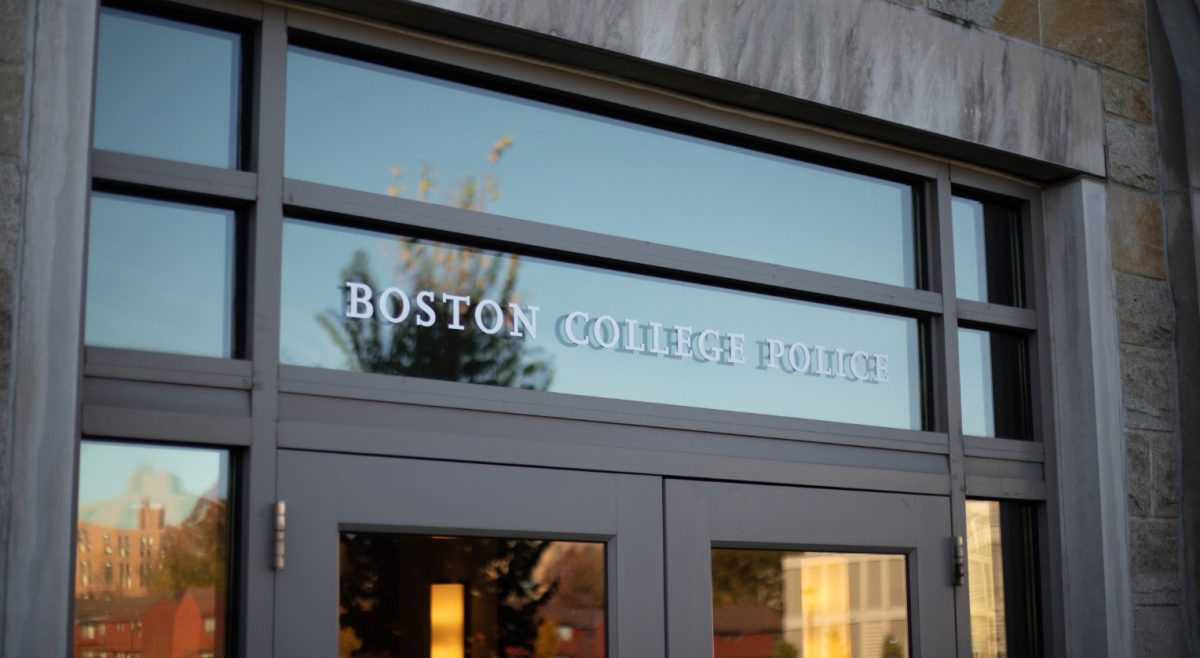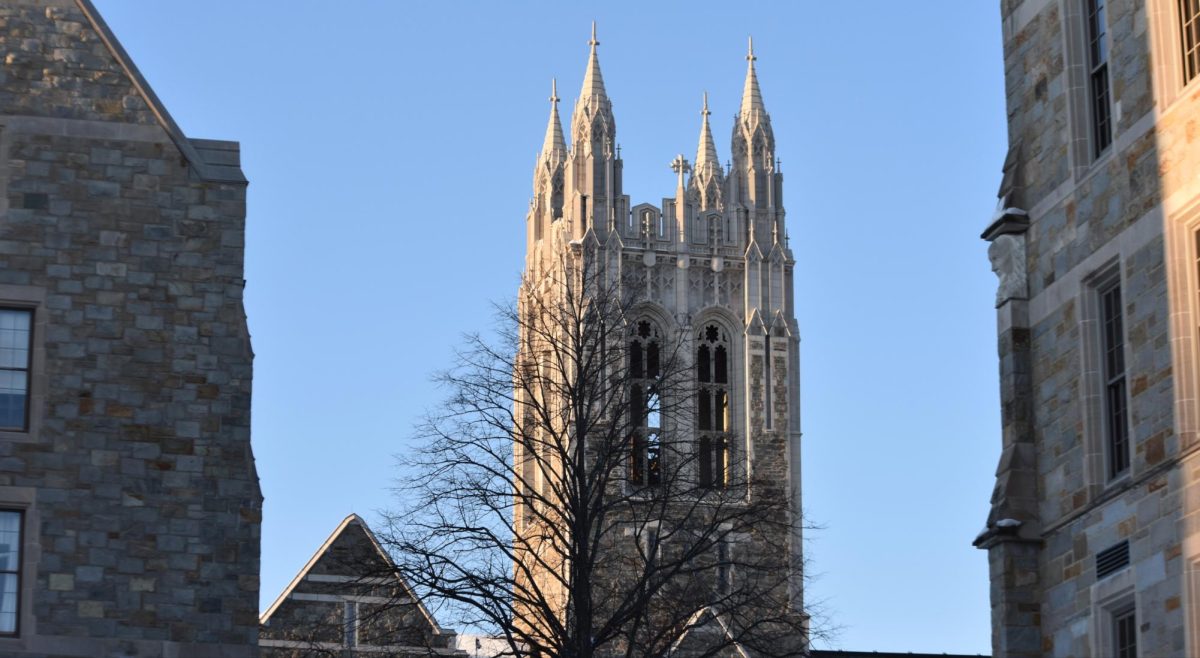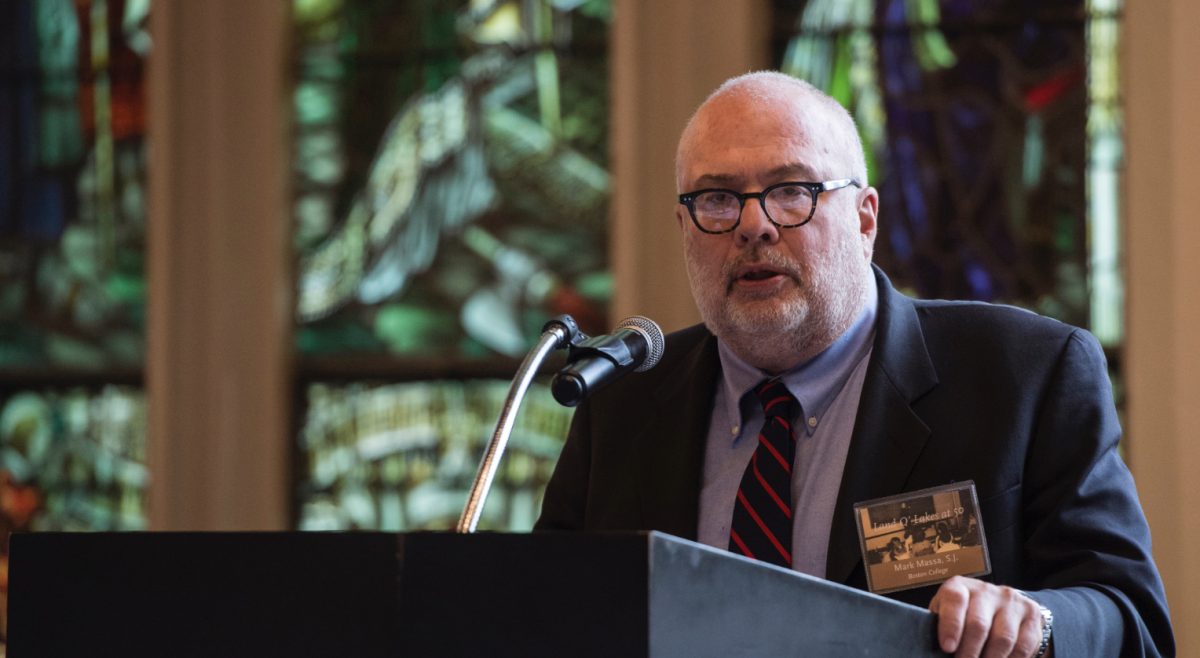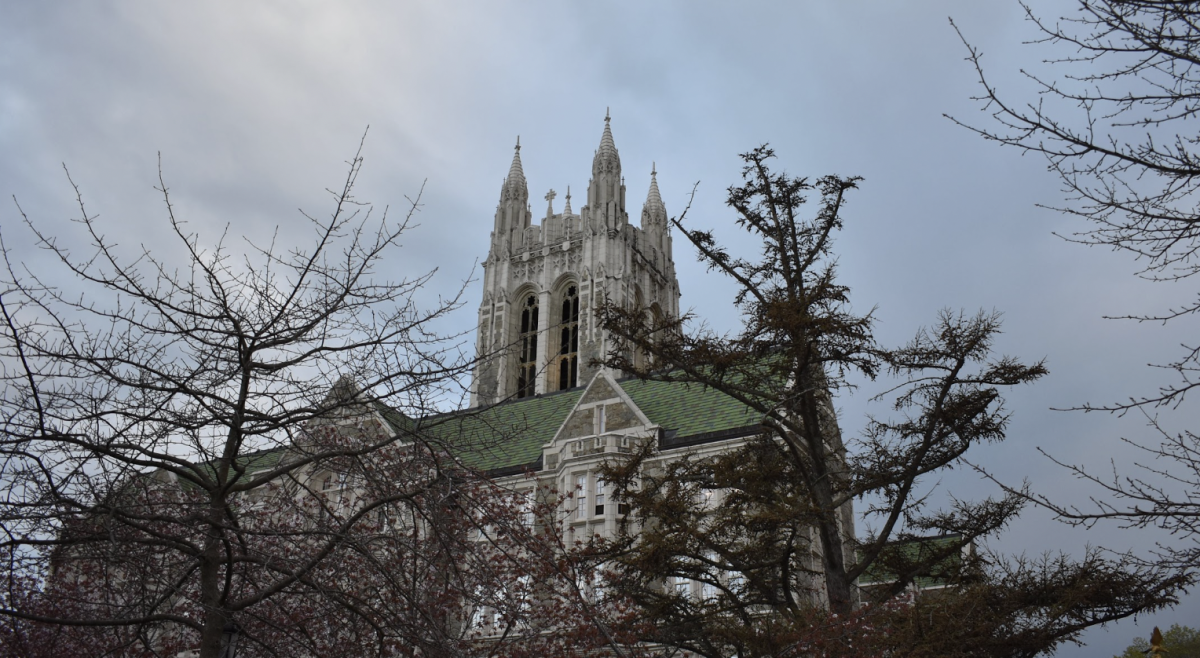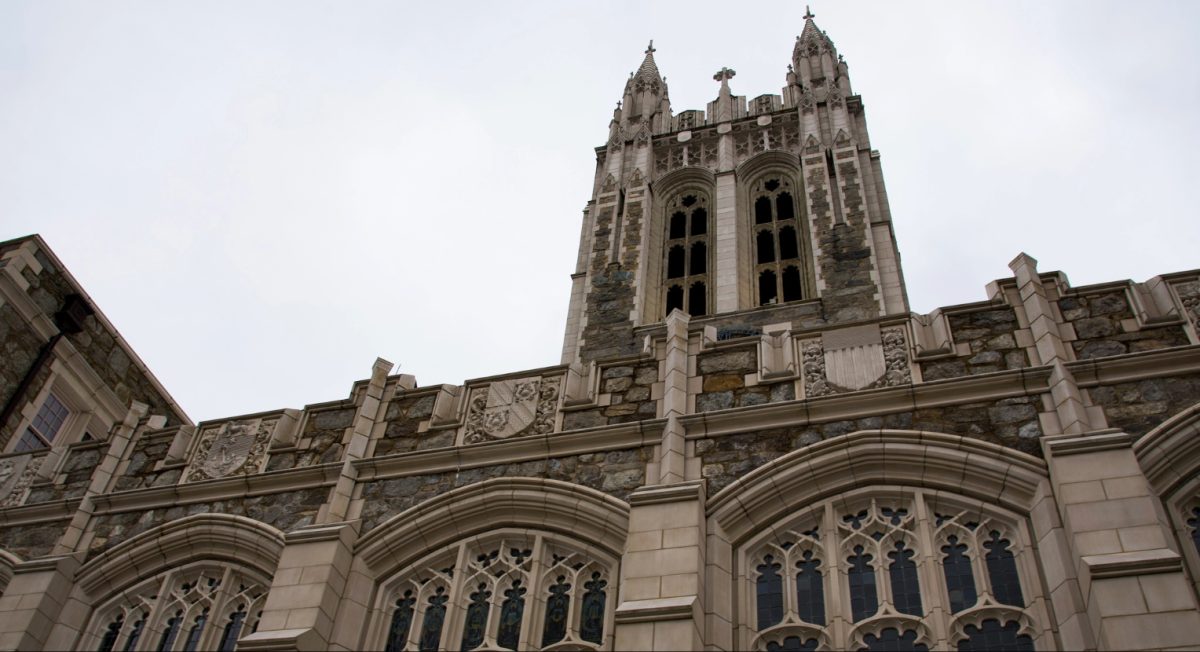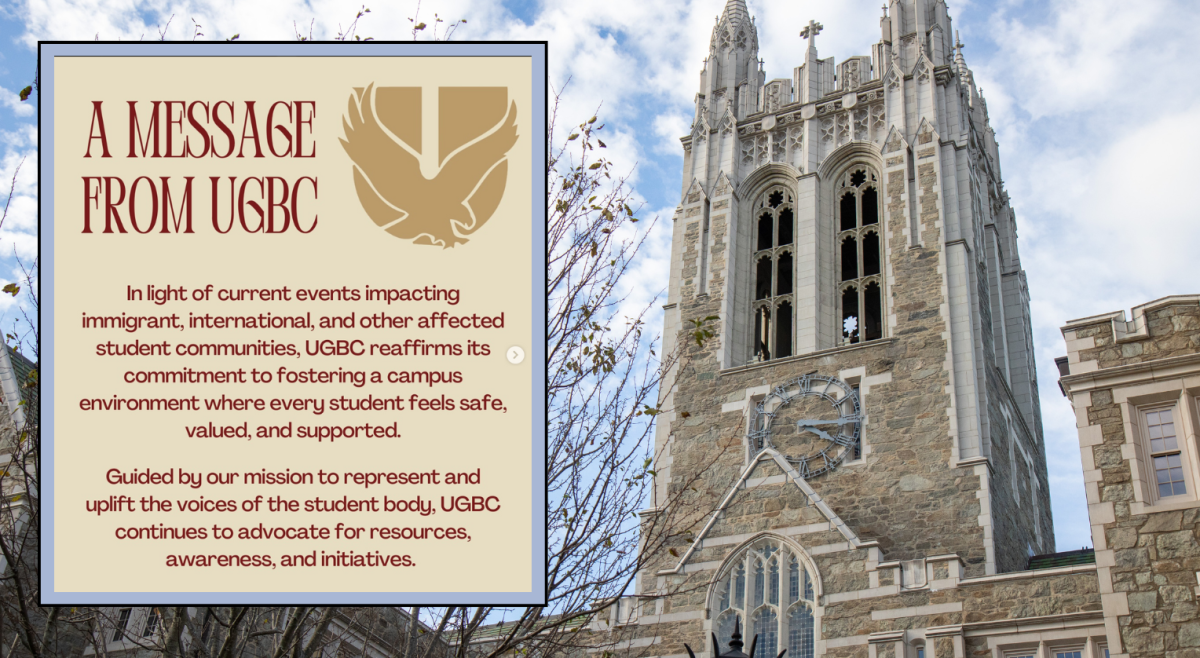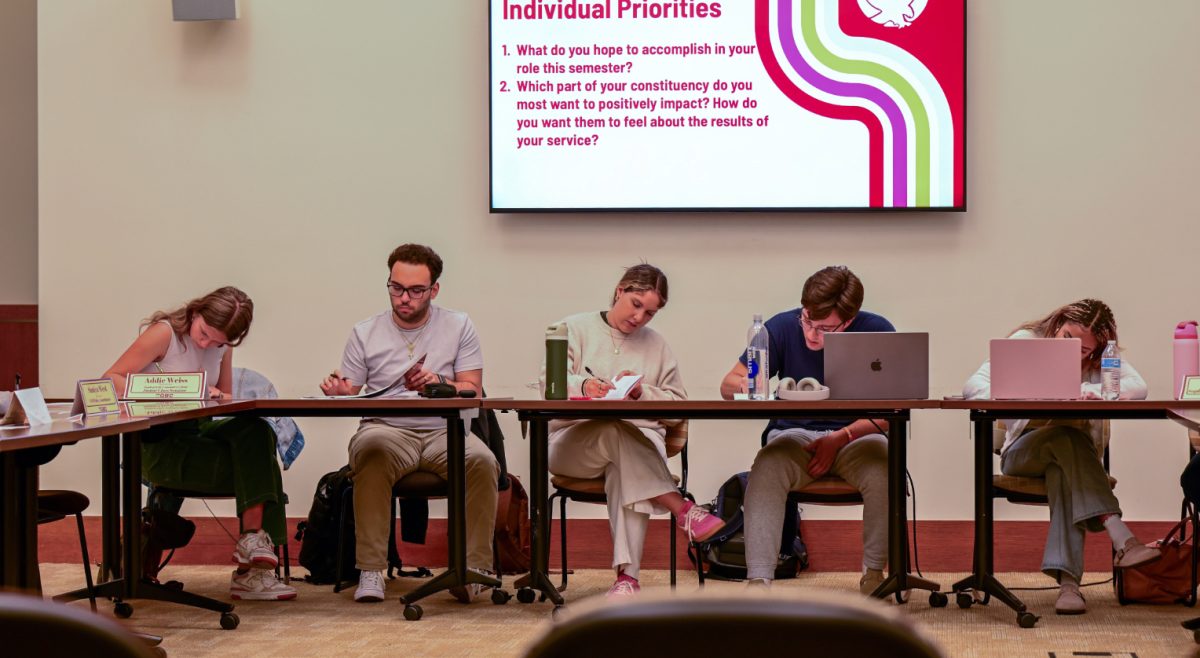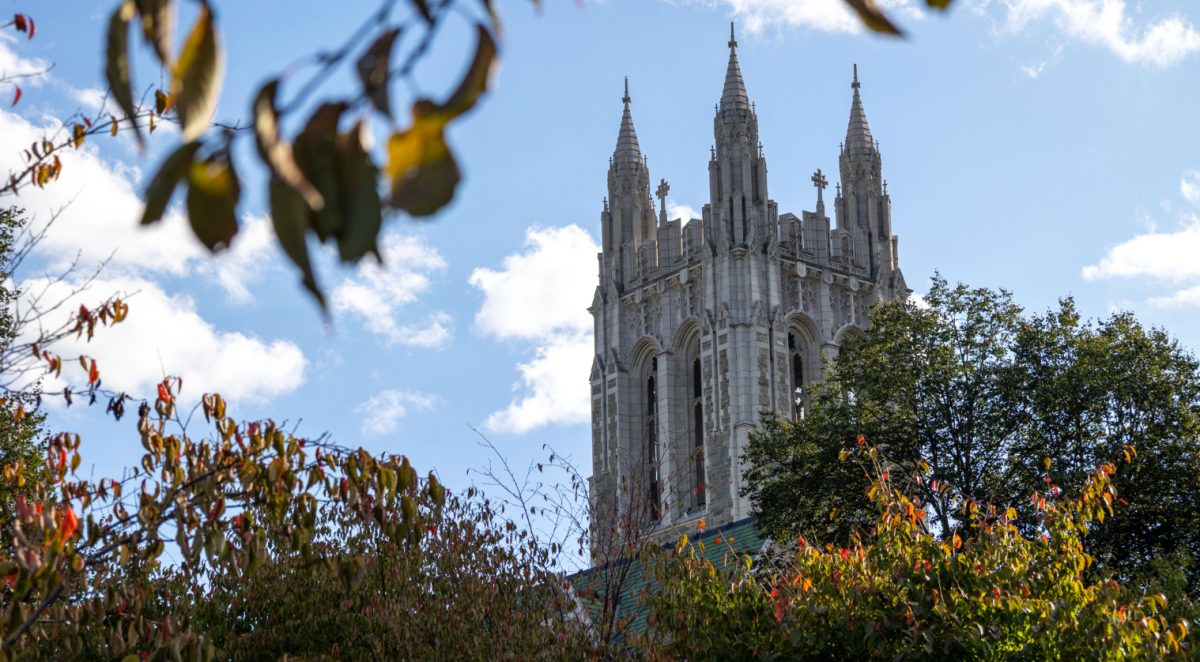At a faculty forum in April 2012, amidst a slew of data presented by Vice President of Planning and Assessment Kelli Armstrong to the hundreds of faculty members who had gathered that day, one statistic stood out to the crowd: female students leave Boston College with lower self-confidence than they had as freshmen. In contrast, men generally gain self-confidence during their four years here, despite having, on average, lower GPAs than their female classmates.
“I could see the shock and horror on some of the faces of the women faculty as Kelli was talking,” said Vice Provost for Faculty Patricia DeLeeuw.
After the presentation was over, a handful of senior female faculty, the majority of whom are department chairs, gathered in the hallway to discuss what could be done.
“They called Kelli and me over and said, ‘Would the two of you facilitate a series of conversations among senior women faculty on, first, what do these data mean, and secondly, and more importantly, what can we as women faculty do about it?'” DeLeeuw said.
This began a series of monthly meetings devoted to picking apart the data, gathering new information, discerning the causes of the statistic, and brainstorming ways to improve the experience of female students at BC. The meetings culminated on Friday, Feb. 15, with a draft of a proposal outlining the data they had gathered over the past 10 months and suggestions for future action.
“I didn’t think we’d be going this long,” DeLeeuw said. “We intended to be finished in a couple months with a couple meetings, and it has gone for just about a year.”
This statistic that sparked the fire was the result of the analysis of two surveys administered by the Office of Institutional Research, Planning, and Assessment (IRPA) every other year: the survey taken at freshman orientation and the senior exit survey. The IRPA is able to track specific students and observe how the answers to questions like “What do you think of your academic achievement” or “How would you rate your drive to succeed?” have changed over four years at BC. The fact that women report lower self-confidence as seniors struck members of the faculty forum as surprising and concerning, in part because it did not seem to fit with their experience with students in the classroom.
“How come the women have a worse self-understanding after four years and men have a better self-understanding?” asked theology professor and director of the Presidential Scholars Program Rev. James Keenan, S.J., who was the only male faculty member to take part in the monthly meetings from the beginning. “It seems to be counter to our experience.” In fact, the small collection of senior faculty that initially made up the informal, ad hoc committee realized after a few meetings that the pressures female students face at BC extend beyond the classrooms and what they, as professors, would have necessarily witnessed.
“I think it became clear to us when we started having the conversations that it wasn’t just an academic thing, it was a cultural thing,” Armstrong said. “We needed people outside just the academic culture to weigh in.”
The committee decided to bring in members of the administration concerned with student affairs to shed more light on the situation. Among those invited were Dean of the College of Arts and Sciences David Quigley, Associate Vice President for University Counseling Thomas McGuinness, and Director of the Women’s Resource Center (WRC) Katie Dalton. In addition, the committee held numerous focus groups with students, hosted panels of students, alumnae, and staff psychologists from Health Services, and, individually or in small groups, took students to lunch in order to gain insight to the experience of a female undergraduate at BC.
Problems that were frequently cited by students as being harmful to one’s self-esteem included the pressure to look or dress a certain way, the hookup culture, and the housing lottery.
Some faculty members, such as Robin Fleming, chair of the history department, were shocked to hear of the drama associated with the annual scramble to assemble a specific number of roommates.
“None of us ever had a clue about this, and it turns out that it’s this incredible drama for everybody,” Fleming said. “How is it that we never knew this?” She added that conversations initiated by the committee enlightened her to “this total disjuncture between student life and academic life.”
Chair of the marketing department in the Carroll School of Management Kay Lemon also appreciated how the conversations that occurred at the meetings and with students helped in expanding her understanding “of the universe at Boston College from a ‘this is the academic culture’ to a broader look that included all the different aspects of Boston College culture.”
Some of those aspects, it turns out, are detrimental to a woman’s self-confidence. Fleming, who has worked at BC since 1989, compared the environment she experienced as a young teacher to the one female students live in today, and cited the hookup culture as one of the most destructive new elements of today’s student culture.
“I used to see people holding hands on campus,” she said. “My students used to get married-to each other. And that’s totally disappeared.”
She also believes that students today feel more pressure to look perfect all the time. “Ten years ago the women weren’t as groomed as they are now, and you just notice how much more time women are putting in,” she said.
Both Fleming and DeLeeuw are concerned about the body image issue at BC because they view it as a “girls being mean to girls” problem.
“You can say that the hookup culture maybe, arguably, favors guys, and so that’s male-dominated,” DeLeeuw said. “And the football culture here at BC-okay, male-dominated. The body image stuff is women doing it to women. Guys don’t care what you’re wearing, by and large. And 10 pounds this way or that way, that’s a girl thing.”
Other members of the committee had other ideas on what could have caused a drop in women’s self-esteem. Lemon, upon noticing that the drop was less pronounced in CSOM than in A&S, suggested that perhaps having a clearer career path aided in maintaining self-esteem.
Fleming and DeLeeuw both entertained the idea that the increasingly negative connotation of the word “feminism” may encourage females to keep their problems to themselves.
“When I was in college, there was nothing wrong with being a feminist, and so women talked a lot about their problems, and there was a kind of solidarity in knowing that maybe you weren’t the only person who felt that way-and that has somehow disappeared,” Fleming said. “I just wish there was more communal feeling where female students could actually figure things out together.”
DeLeeuw refers to herself as “an aging feminist” and remarked that perhaps her generation was partially guilty for the bad reputation feminists now have.
“We have just not done a very good job of convincing women of generations after us that the battle isn’t over, and that the struggle for women’s equality goes on,” she said. “It changes from generation to generation. We have different issues, I suppose, but it’s certainly not over. And we need to pay attention to it.”
When examining the possible causes behind the statistic, the committee realized quickly that most of them were not unique to BC, and that, as a result, the phenomenon is not particular to BC. Several other universities, such as Duke and Princeton, have done similar studies on female self-esteem. Some committee members did point out BC-specific aspects that they believe contribute to the problem, however. For example, Keenan expressed his concern about how few women hold senior administrative positions at BC.
“We’ve gotten this far because there is one woman vice president, and you have to say that this has some impact on the life of the school, because the people who can appreciate this are usually the people who can understand it experientially,” Keenan said. “Things change when there are people in the room bringing things up.”
The members of the committee will spend the next few weeks looking over the proposal, and after it has been finalized, it will be released to the public. The main goal, according to several members of the committee, is to raise awareness of the problem so that students, faculty, and administrators alike can be attentive to it and work to solve the problem.
“I think the bottom line … it came from one of the faculty members, who said that this is a University known for sending its students to do social justice work,” Keenan said. “Maybe we should be doing social justice work here on this campus.”

